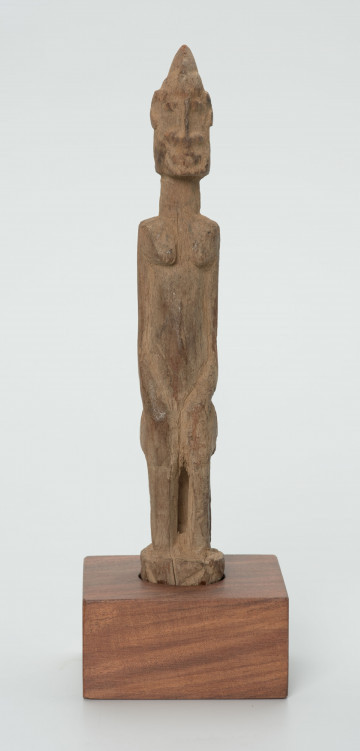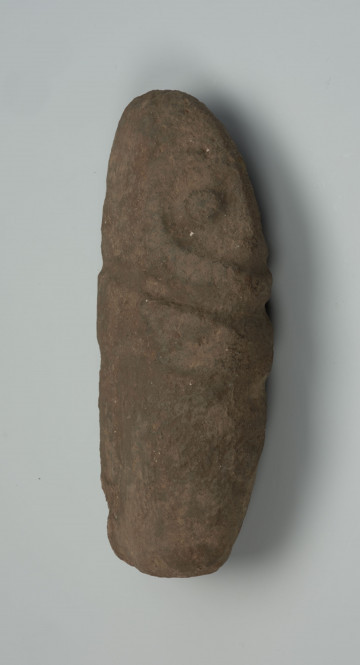
Figurine - ancestor
między 1901 — 1950
National Museum in Szczecin
Part of the collection: Collection of Dogonian art
Dogon art is created primarily for religious purposes. According to their mythology, the creator of the universe is the god Amma, but the inhabitants of the Bandiagara Escarpment pay little attention to him, concentrating instead on the various ancestors who are intermediaries between the living and the ultimate forces of the universe. It is with them that most of the Dogon rituals are associated. Among the ancestors, several categories can be distinguished. One of them is the first ancestors created by Amma - four pairs of perfect twins. In the oral tradition the names of the male twins have only survived: Binu Seru, Amma Seru, Lebe Seru and Dyungo Seru. According to the Dogon, all humanity is descended from them. Another group of ancestors are various binu, i.e. immortal ancestors from times when there was no death on earth. The last, most numerous category is the dead members of all the families called wagem, which translates literally as those who are far away. The priests of this cult are the heads of all the great families, ginna bana, who look after the altars dedicated to them also called wagem located in the ginna houses. For the dead to become the ancestors of wagem, rituals performed by the Awa association of circumcised men are necessary. It is thanks to the Dama funeral feasts they prepare and celebrate, during which dancing masks appear, that the dead move into the ranks of the ancestors. The ancestors claim their offerings through the living relatives who have inherited their nani. On the other hand, twice a year, during rituals called bago di, which celebrate the harvesting of the first crops, and wagem bulu (revive the ancestors) taking place a few weeks later, all the ancestors are collectively commemorated.
Ewa Prądzyńska
Author / creator
Dimensions
cały obiekt: height: 46,5 cm, width: 7 cm
Object type
figure
Creation time / dating
Creation / finding place
Identification number
Location / status

między 1901 — 1950
National Museum in Szczecin

między 1951 — 2000
National Museum in Szczecin

między 1951 — 2000
National Museum in Szczecin
DISCOVER this TOPIC
Museum of King Jan III's Palace at Wilanów
DISCOVER this PATH
Educational path